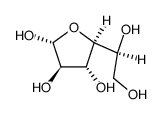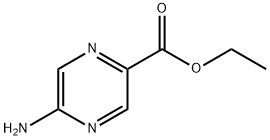In the early hours of April 8, 2025, a catastrophic event unfolded in the Dominican Republic. The roof of a club in the capital city, Santo Domingo, suddenly collapsed during an event, leading to a tragic toll of 184 lives lost. As the nation mourns, the question on everyone's mind is: Was this a result of human error or a problem with the materials used in the building's construction?
The collapse of a club in the Dominican Republic caused 184 deaths. Was it a human error or a material problem?
Related Encyclopedia
Related Products More >
-
- 9002-86-2
- CNY Request For Quotation
-
- CNY Request For Quotation
-
- CNY Request For Quotation
-
- CNY Request For Quotation
-
- 68187-51-9
- CNY Request For Quotation
-
- 68187-51-9
- CNY Request For Quotation
-
- 51274-00-1
- CNY Request For Quotation
-
- 51274-00-1
- CNY Request For Quotation







 沪ICP备2021018848号-5
沪ICP备2021018848号-5

Steel is a widely used material in modern construction due to its high strength - to - weight ratio. Chemically, steel is an alloy primarily composed of iron and carbon. The addition of carbon increases the strength and hardness of iron. In the construction of large structures like clubs, steel beams are often used to support the roof. High - quality steel, such as structural steel with specific carbon content (usually around 0.15 - 0.25% for structural applications), can withstand significant loads. However, if the steel used in the club's construction was of sub - standard quality, it could have been more prone to failure. For example, if the manufacturing process did not properly control the alloy composition, the steel might lack the necessary tensile strength. Over time, under the continuous load of the roof and any additional stress from events like people dancing or equipment installation, the sub - standard steel could experience fatigue failure. Fatigue occurs when a material is subjected to repeated loading and unloading, causing tiny cracks to form and propagate. In a chemical sense, environmental factors like humidity can also accelerate the corrosion of steel. Rust, which is iron oxide formed when iron in the steel reacts with oxygen and water, can weaken the steel's structure. If the steel beams in the club were not properly protected with anti - corrosion coatings, rust could have gradually eaten away at the metal, reducing its load - bearing capacity.
Concrete - The Foundation and Support
Concrete is another essential building material. It is a composite material made up of cement, aggregates (such as sand and gravel), and water. Cement, mainly composed of calcium silicates, reacts with water in a process called hydration. This chemical reaction hardens the concrete over time, providing strength. In the case of the club, concrete might have been used for the columns and the foundation that supported the roof. If the concrete mix was not proportioned correctly, it could lead to a weak structure. For instance, if there was too much water in the mix, the concrete would have a higher water - cement ratio, resulting in lower strength. Additionally, improper curing of concrete is a common human error. Curing is the process of maintaining the right moisture and temperature conditions for the concrete to develop its full strength. If the concrete in the club's columns was not cured properly, perhaps due to insufficient watering or exposure to extreme temperatures during the initial days after pouring, it could have developed cracks. These cracks would compromise the integrity of the columns, and in turn, the stability of the entire structure.
Wood - Sometimes Used in Roof Structures
Wood, although less common in large - scale commercial buildings for primary structural support, might have been used in parts of the club's roof, such as for decorative elements or in some cases, for lighter - duty framing. Wood is composed mainly of cellulose, hemicellulose, and lignin. Cellulose provides strength, while lignin gives rigidity. However, wood is vulnerable to biological degradation. Fungi and insects can attack wood, especially if it is not treated. For example, termites can eat away at the wood, hollowing it out and reducing its structural integrity. If the wood in the club's roof was not treated with appropriate preservatives, which often contain chemicals like copper - based compounds to deter pests and fungi, it could have been weakened over time. In a crowded club with high humidity levels from people's body heat and sweating, the conditions could have been ideal for fungal growth on untreated wood, further compromising the roof's stability.
The Role of Human Error
Human error could have played a significant role in this disaster. During the construction process, if the engineers miscalculated the load - bearing requirements of the roof, they might have used materials that were not strong enough. For example, they might have underestimated the number of people who would be in the club during a peak event, leading to an incorrect assessment of the live load the structure needed to support. Another aspect of human error could be in the inspection and maintenance of the building. If the building owners or inspectors failed to regularly check for signs of wear and tear, such as cracks in the concrete, rust on the steel, or rot in the wood, the problems could have gone unnoticed until it was too late.
In conclusion, determining whether the collapse of the club in the Dominican Republic was due to human error or a material problem will require a comprehensive investigation. It is likely that a combination of factors, including sub - standard materials and human mistakes in design, construction, and maintenance, contributed to this tragic event. As the investigation unfolds, it is crucial to learn from this disaster to prevent similar tragedies in the future.
The roof's structural integrity is dependent on the quality and type of materials used. Commonly used roofing materials include steel, wood, concrete, and composites, each with its own properties and suitable applications. Steel, for instance, is known for its strength and durability, but it is also subject to corrosion if not properly protected. Wood can be treated to enhance its durability, but it remains susceptible to rot and insects. Concrete, on the other hand, offers excellent durability and fire resistance but requires careful design and construction to prevent cracking and failure.
In the case of the Dominican Republic club, preliminary reports suggest that the building, which was not old or dilapidated but recently renovated, might have experienced material failure. This raises concerns about the quality of the materials used in the renovation and whether they met the necessary standards for load-bearing structures. The materials could have degraded over time, or there might have been a defect in the materials or the construction process.
Another aspect to consider is the chemical treatment or coatings applied to the materials. Chemicals like corrosion inhibitors, fire retardants, and preservatives are often used to enhance the durability and safety of construction materials. If these chemicals were not properly applied or if they degraded over time, they could have contributed to the failure. For example, the use of improper coatings on steel structures to prevent corrosion can lead to rusting and eventual structural failure.
Moreover, the environmental conditions in the Dominican Republic, such as heavy rainfall, high humidity, and temperature fluctuations, can also affect the durability of construction materials. These factors can accelerate the degradation of materials, especially if they are not adequately protected.
The investigation will also consider human factors, such as design flaws, construction mistakes, or maintenance issues. Was the roof designed to withstand the expected loads and environmental conditions? Were the appropriate construction techniques and materials selected and properly used? Were there any maintenance issues that could have compromised the structure?
While the exact cause of the collapse is yet to be determined, it is clear that a comprehensive investigation is needed to understand the factors that contributed to this tragedy. This will not only bring closure to the victims and their families but also help prevent similar incidents in the future.
In the realm of materials and construction, the importance of selecting and using high-quality, durable materials cannot be overstated. Whether it's steel, concrete, or composites, each material has its own unique properties and challenges, and it is the responsibility of engineers, architects, and builders to ensure that they are used correctly and maintained properly.
As the investigation unfolds, we wait to learn the findings and recommendations that will come from this tragic incident. In the meantime, we are reminded of the critical importance of materials science and engineering in ensuring the safety and soundness of our built environment.